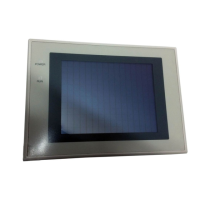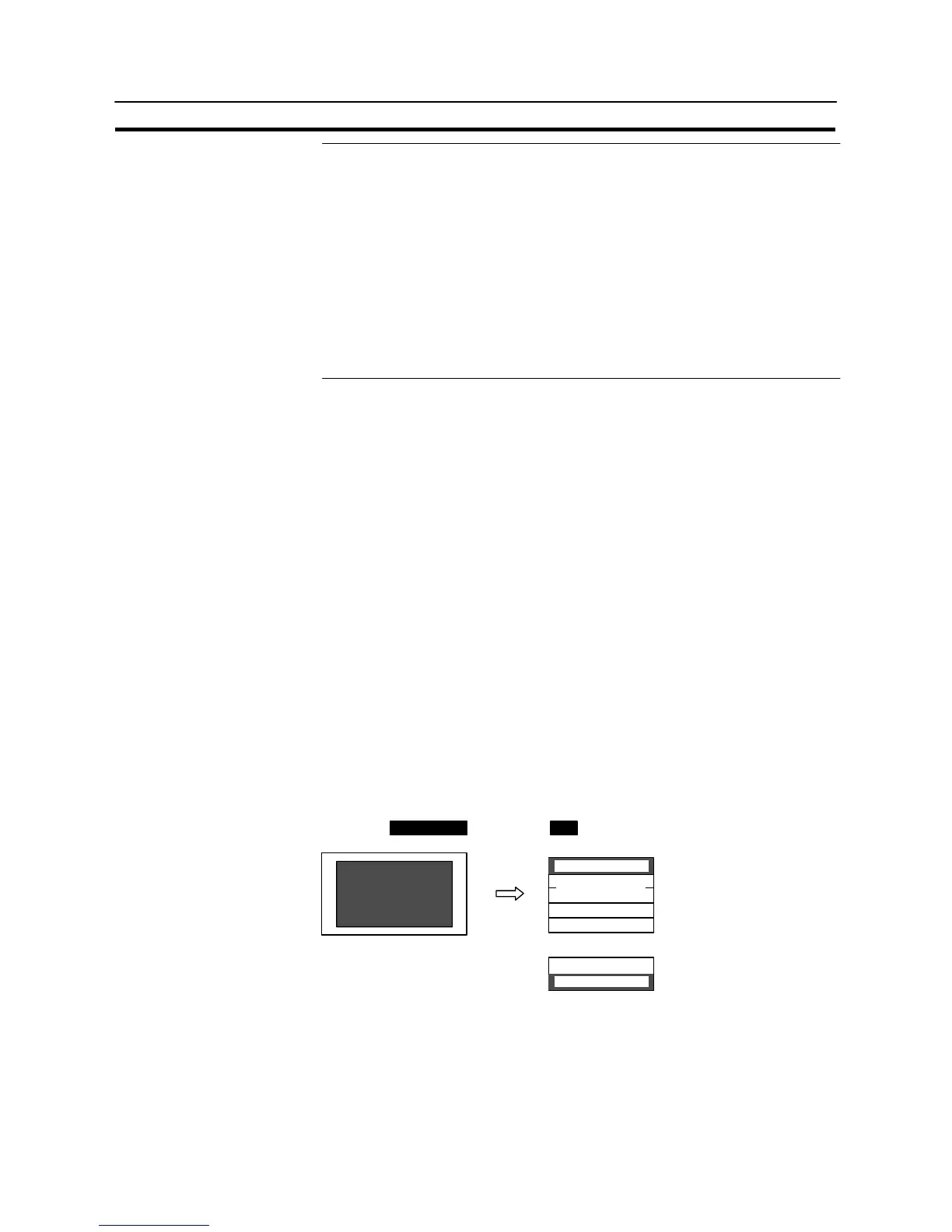487
Screen Display and Notification
Section 8-3
Reference - The description above applies to the case where both the image/library code
and the screen numbers are set in the bit memory table. If the image/library
code is not set, the screen is switched over the first time the message is
pressed.
- The NT31/NT31C screen is switched when the reversed message is pressed.
The screen is not switched if the status of the allocated bit changes from “1” (ON)
to “0” (OFF).
- When the screen is switched by operation at the NT31/NT31C, the “screen
switching strobe” of the PT status notify bit changes to “1” (ON) so that the event
of screen switching is notified to the host. The screen number of the new screen
is written to the “screen switch setting” word in the PT status control area at the
same time. (page 487)
[Example of Use]
For an example of use of screen switching using the alarm list/history function, re-
fer to 8-8 “Using the Alarm List/History Function” (page 538).
8-3-2 Finding the Screen Number of the Presently Displayed Screen
The NT31/NT31C has a function to notify the host of the occurrence of a screen
switching event, and the screen number of the new screen when the display
screen is switched by operation at the NT31/NT31C.
The host uses the following method to ascertain the screen switching timing and
the new screen number.
- Reading the PT status notify area and the PT status control area
Reading the PT Status Notify Area and the PT Status Control Area
When the screen is switched, it is notified to the following areas.
- Screen switching timing:
“Screen switching strobe” in the PT status notify area
- Screen number of the presently displayed screen:
“Screen switch setting” word in the PT status notify area
Displayed screen
PCNT31/NT31C
← Screen No.
PT status control area
Screen switch setting
Copy memory
table setting
PT status control setting
Reserved for system use
← Screen switch strobe flag
PT status notify area
Content update memory table
PT status
[Setting]
The PT status notify area and the PT status control area must be allocated to a
word in the host, accordingly, no special settings are required for reading the sta-
tus.

